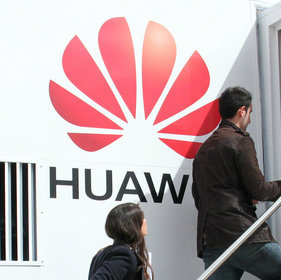Eurobites: Huawei Takes TomTom Route to Plug Google Navigation Gap
Also in today's EMEA regional roundup: EU bigwig plays down the Huawei-shaped hole in 5G rollout; Ericsson researches 5G in France; Telefónica's flexibility impresses rubber giant.

Also in today's EMEA regional roundup: EU bigwig plays down the Huawei-shaped hole in 5G rollout; Ericsson researches 5G in France; Telefónica's flexibility impresses rubber giant.
Huawei is hoping to help plug the Google-shaped gap in its smartphone offer through a deal with TomTom, the Dutch location services company best known for its satnav systems. As Reuters reports, Huawei was forced to develop its own smartphone operating system and source non-US apps after it was blacklisted from sourcing US software, including Google apps such as its ubiquitous Maps tool, by the Trump administration last year. The deal with TomTom means that Huawei can use the Dutch company's maps, traffic information and navigation software to create new apps for its smartphones. (See Can Huawei Survive Trump? and Google & Tech Giants Cut Huawei Adrift.)
In related matters, Thierry Breton, the European Commissioner for Internal Market and Services, has told a conference in Munich over the weekend that insisting on the use of European companies in 5G rollouts, and introducing security-related processes that could make it harder to source and deploy technology from elsewhere (an indirect reference to the likes of Huawei and smaller Chinese rival ZTE), will not mean that such rollouts will be delayed. He noted that a set of 5G network security measures that should be implemented by EU member states would be ready in the coming weeks but that these rules would apply to all: "Everybody will have to fulfill all these rules," he was reported as saying. He also stated that "Everybody is welcome in Europe," though that's becoming increasingly harder to qualify.
Ericsson is to set up a new 5G-focused R&D site in France this year, with an initial unit at the vendor's offices in Massy. It is envisaged that up to 300 people will be employed at the site. For more details, see this Ericsson announcement.
Telefónica has landed a five-year network contract with Arlanxeo, a Netherlands-based synthetic rubber company. Among the goodies Telefónica is bringing to the table: an SD-WAN network with built-in redundancy serving business and production locations worldwide; WAN2Cloud and multicloud management including SAP-HANA, MS Azure and O365; and WAN optimization features for more efficient data traffic performance.
Sky, the UK-based purveyor of pay-TV and more, has agreed a multi-year deal with Netflix, offering Sky's customers the option to take Netflix's Basic Plan on the Sky Q platform. The deal is the latest in a series of content partnerships for Sky, with the BBC, Channel 4, Channel 5 and Warner Media all having already entered into new agreements.
France's Iliad has formally launched its plan for a €1.4 billion capital increase, which will be used to fund a share buyback offer. As Reuters reports, Iliad founder Xavier Niel announced last November that he was ready to inject the extra funds to show his commitment to the telco. (See Italian stallion, French flop: Iliad's talk of asset sales should worry Europe.)
Ofcom, the UK's communications regulator, has had its preferred candidate to replace Sharon White as CEO rejected by Prime Minister Boris Johnson's inner circle, according to the Daily Telegraph. Melanie Dawes, a career civil servant, has apparently not set the appropriate pulses racing, and the regulator is being encouraged to look more towards industry for potential successors to White. In November, Ofcom appointed Jonathan Oxley as its interim chief executive in readiness for the departure of White at the end of that month. Figure 1:
 Former Ofcom CEO Sharon White took off last November.
Former Ofcom CEO Sharon White took off last November.Subsea network operator Angola Cables has provisioned a direct data link between Africa and the US, using capacity on the SACS (South Atlantic Cable System) cable that runs from Angola to Brazil and on the MONET cable that runs from Brazil to Florida. In an effort to maximize capacity on the first-of-its-kind route, Angola Cables is checking out the capabilities of Nokia hardware that is based on the vendor's Photonic Service Engine 3 (PSE-3) chipset. For more details, see this story on our sister website, Connecting Africa.
Climate research organization CDP has awarded BT an "A List" rating for its leadership on corporate transparency and action on climate change. The UK incumbent operator was one of 179 major global brands (out of more than 8,000 marked) making the top grade.
— Paul Rainford, Assistant Editor, Europe, Light Reading
About the Author(s)
You May Also Like




_International_Software_Products.jpeg?width=300&auto=webp&quality=80&disable=upscale)







